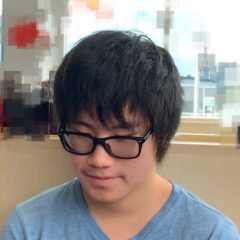Earlier this week, I decided to switch over from the default Wacom tablet drivers to the custom Hawku driver. The Hawku driver was made specifically for the osu! rhythm game. I’ve heard good things about it, and since I don’t use my tablet for anything else, I decided to give it a try.
Supposedly, the Hawku driver reduces input latency, removes cursor smoothing, and allows for an easier time when changing tablet area. First I’ll go over the input latency. Input latency is basically the amount of time it takes for a movement from the tablet to be processed in the game. When I used to play with the old Wacom drivers I’d get between 1-2ms of input latency, but with the Hawku drivers it’s only 0.6ms. The difference isn’t really that big, and I can’t really tell a difference, but it’s faster so that’s good.
One of the other things that the Hawku driver does is remove cursor smoothing. Cursor smoothing is something that can be put into the hardware of a tablet or is provided with a tablet’s drivers. What it does is smoothen out your cursor’s movements so that lines are more uniform. This is helpful for when you’re drawing, but smoothing can change the position you want your cursor to be and can also increase input latency. The Hawku driver allows you to choose whether you want to have smoothing or not. You’re able to change the amount of smoothing applied if you do use the filter though. For me, playing without any smoothing felt a lot different that what I was used to before. Since the cursor is also moving faster without smoothing, I started experiencing some screen tearing, but I was able to fix that with playing in windowed mode. I know that some people like to use smoothing because their hands shake a lot when they get nervous, but so far I haven’t had too many issues.
The last big thing that the Hawku driver does is that it makes it really easy to change your tablet area. Tablet area is the amount of space where the tablet is active. You can can make this bigger or smaller depending on your preference, and will change how far you have to move your pen to reach different parts of the screen. The Hawku driver has lots of different ways you can set your area. One way is by inputting the coordinates of the different corners of the area you want. This is the way the Wacom drivers did things, but you can’t actually tell how long or wide the area is. By converting the coordinates to millimeters, the Hawku driver makes it a lot easier to just set the size you want and share different areas. Especially since not all brands of tablets use Wacom’s coordinate system. I decided to try a few different top players’ areas, but my own still felt more comfortable for me. However, being able to easily test out different areas was still a nice feature.
Overall, I feel like if you only use a tablet for osu!, you should give the Hawku driver a shot. My aim definitely feels a lot more consistent than it used to be now that there’s no smoothing. Even it’s just placebo, the ability to precisely and conveniently change your tablet area using an actual unit of measurement is really helpful. If you don’t like the feeling of the new driver, you can always try adding smoothing or just go back to whatever you were using before.
